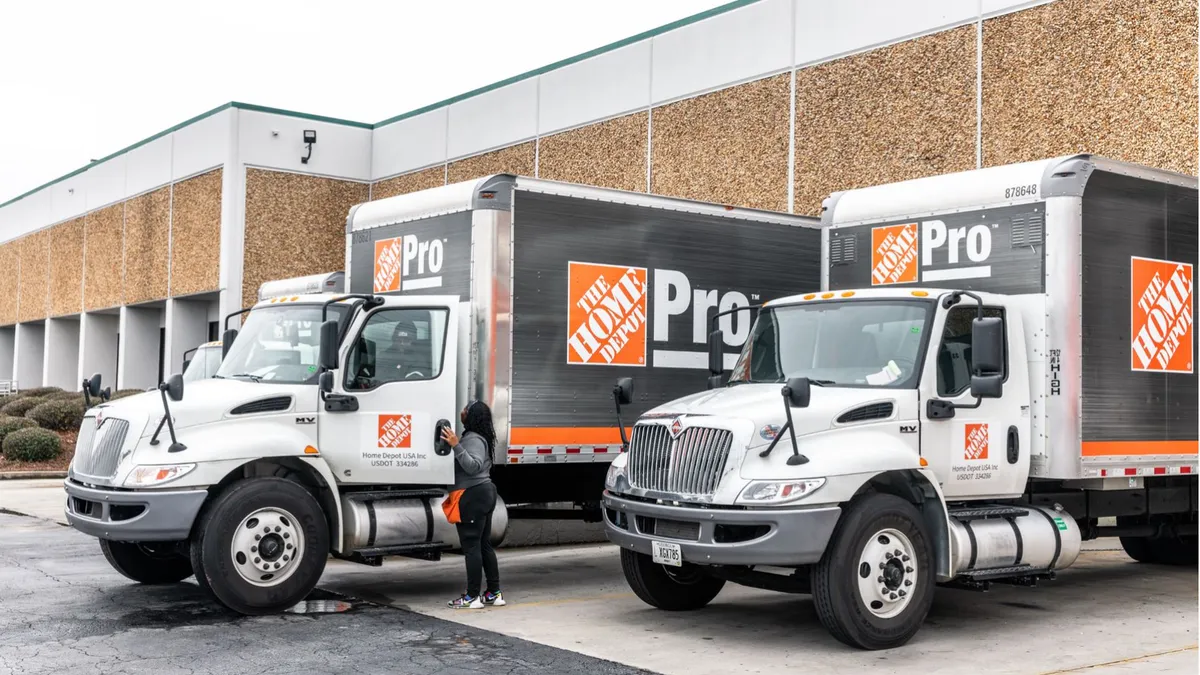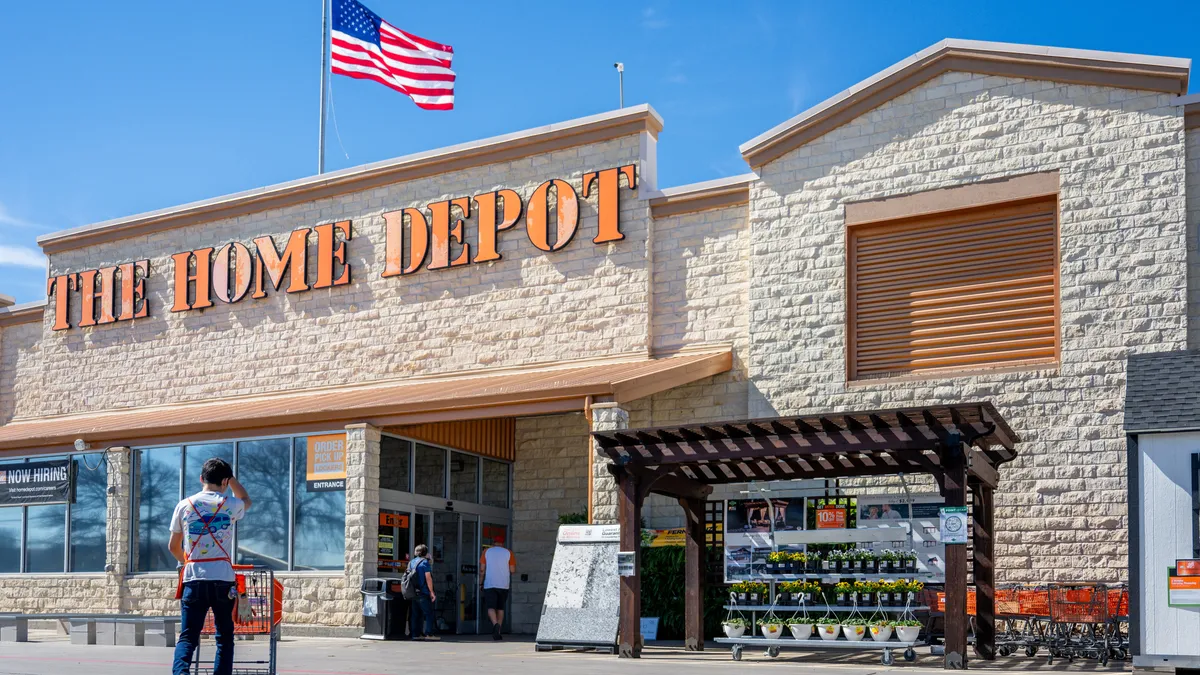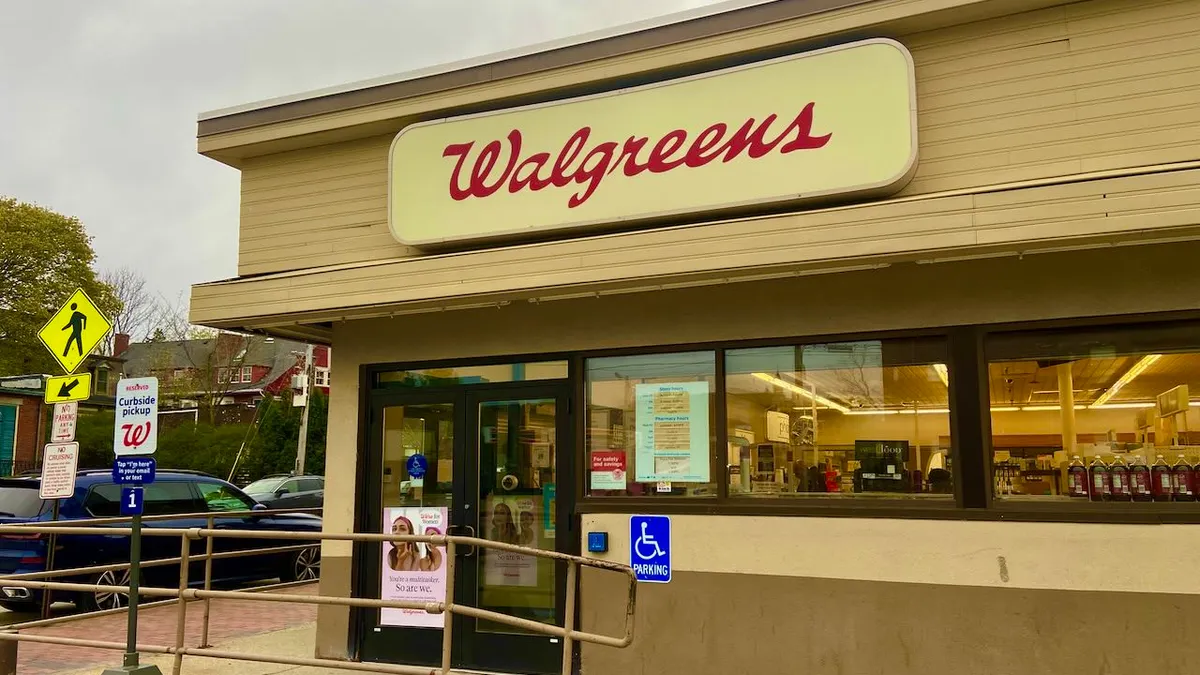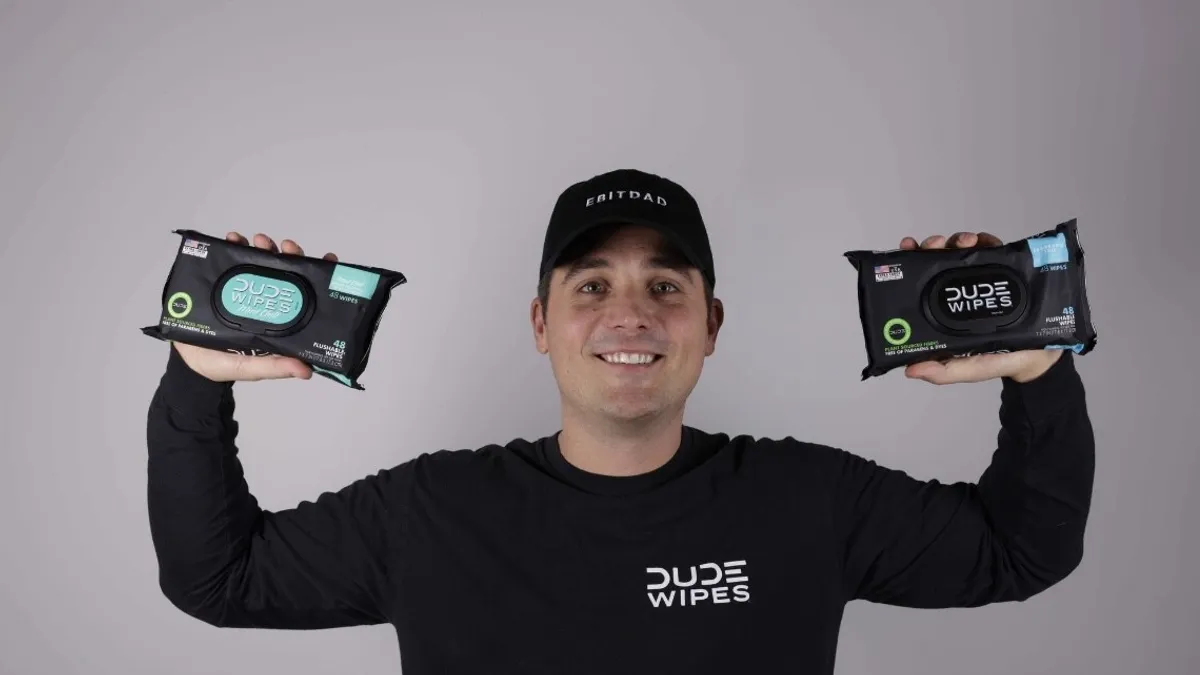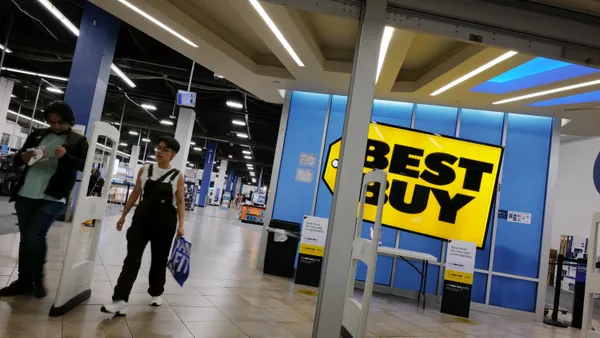As economic uncertainty causes some consumers to pull back on discretionary spending, a divergence is emerging between the home improvement sector’s biggest players.
The Home Depot on Tuesday reported its highest quarterly sales and earnings in its history, according to CEO Ted Decker. The retailer’s second quarter net sales grew 6.5% year over year to $43.8 billion, while its comparable sales increased 5.8%. In the U.S., where comps were up 5.4%, all 19 of its regions posted positive comps against the same period last year, Decker said on a call with analysts. Home Depot’s operating income grew 8.6% to $7.2 billion, while net income increased 7.6% to $5.2 billion.
Prolonged cool weather quickly followed by hot temperatures shortened the spring selling season, causing sales of seasonal products — including grills, fertilizers, chemicals and mowers — to underperform the company’s expectations. But its strength with pro customers helped offset those impacts.
Home Depot saw growth in both its pro and DIY customer segments, but pro continued to outpace DIY. The retailer, which has largely been the destination of choice for most pros, has made investments to help maintain that position around fulfillment, as well as offering a more personalized customer experience and business management tools, the company said. Home Depot in May launched features on its B2B site aimed at enhancing the quoting and interconnected shopping experience for those customers.
Maintaining its hold on the pro customer will be critical as consumers continue to pull back on discretionary purchases in the face of inflation and economic uncertainty.
“In our view, the contribution to growth from everyday shoppers has waned over the past few quarters as some households have cut back on discretionary activities like home decoration. This has been exacerbated by a slowing of the housing market which creates fewer opportunities for major projects,” GlobalData Managing Director Neil Saunders said in emailed comments. “Fortunately for Home Depot, there has not been a commensurate slowdown in trade activity. After a sharp contraction during the pandemic, the numbers working in construction are back up to near record highs.”
For the second quarter, Home Depot’s comp average ticket increased 9%, driven by inflation, while comp transactions declined 3.1%, Jeff Kinnaird, executive vice president of merchandising, said on the call. Big-ticket comp transactions — what the company defines as purchases exceeding $1,000 — were up 11.6% year over year, driven by strength in pro-centered categories like pipe and fittings, gypsum and fasteners.
“We are operating in a unique environment with many cross currents, inflation and interest rates and supply chain disruptions and the like. But given all that, our customer in our markets has been incredibly resilient,” Decker said.
But even among everyday consumers, home improvement retailers appear to be better positioned than other retailers when it comes to higher prices, Saunders noted, because “the chain sells many things that people need for their improvement or repair projects, so a high proportion of products are of an essential nature and need to be bought whatever the price.”
In contrast to many in the industry that have lowered guidance in recent weeks, Home Depot on Tuesday reaffirmed its outlook for the year. The retailer expects total sales and comps to grow about 3% year over year, while operating margin is projected to be about 15.4%.
Meanwhile, rival Lowe’s on Wednesday reported “lower-than-expected sales,” with net sales falling 0.3% year over year to $27.5 billion and comps declining 0.3%. In the U.S., comps were up just 0.2%. The North Carolina-based retailer’s operating income grew 0.5% to $4.2 billion, while its net income fell 0.9% to $3 billion.
The Q2 results were “disproportionately impacted” by a slowdown in demand from DIY sales, which were lower than expected in the second quarter and first half of the fiscal year, according to CEO Marvin Ellison. DIY customers drive 75% of the retailer’s sales, while pros are responsible for 25%.
Like Home Depot, a shorter spring disproportionately affected sales of products geared toward the DIY customer, including garden, fertilizer and garden nursery items.
But, Lowe’s reported the ninth consecutive quarter of double-digit growth among its pro customer segment, with 13% comp growth year over year and 37% growth on a two-year basis.
“This divergence in performance of the two companies is something we have repeatedly flagged and is now materializing as the home improvement market slows,” Saunders said. “The central problem for Lowe’s is that demand from the DIY shopper has moderated significantly since the height of the pandemic, and with around three-quarters of its transactions linked to this cohort, it is more exposed with fewer pro customers to help it make up lost ground.”
Lowe’s has made efforts to capture more share among pros, including by introducing a rewards program and piloting a pro fulfillment center in Charlotte. But “the problem for Lowe’s is that it has nowhere near as many pro customers as Home Depot,” Saunders added. “And in some categories, such as power tools, it under indexes its rival by quite a large margin. None of this is helpful for offsetting the weakness in consumer DIY demand.”
For the quarter, the retailer’s comp transactions were down 6.4%, while comp average ticket was up 6.6%, to $100.40, driven largely by inflation and higher pro sales, the company said.
Lowe’s also reiterated its outlook for the year, but now expects sales and comps to be at the bottom end of its guidance range — total sales of $97 billion and comps down 1% — and operating income and earnings per share to be at the top end of its range. The company also expects pro to outperform DIY for the remainder of the year.
“Despite continued macro uncertainty, we remain confident in the long-term strength of the home improvement market and our ability to take share,” Ellison said in a statement.



